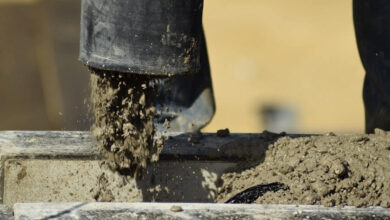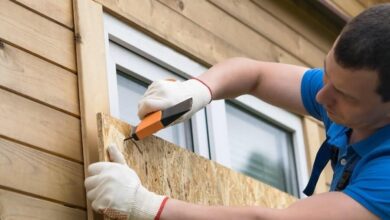Chimney Restoration Process: Reviving Your Home’s Essential Structure

A chimney is an integral part of many homes, providing warmth and comfort during the colder months. However, like any other part of your home, chimneys require regular maintenance to ensure they function safely and efficiently. Over time, chimneys can deteriorate due to exposure to the elements, constant use, and lack of proper care. This is where chimney restoration comes in – a process that involves repairing, cleaning, and upgrading your chimney to restore it to its original condition.
In this article, we’ll explore the chimney restoration process, exploring the various steps involved and the importance of each stage.
Understanding the Need for Chimney Restoration
Before we dive into the restoration process, it’s crucial to understand why chimney restoration is necessary. Several signs indicate your chimney needs attention, such as cracks in the mortar or brickwork, flaking or spalling bricks, white stains on the chimney exterior (known as efflorescence), or a noticeable decrease in your fireplace’s efficiency. If you notice any of these signs, it’s time to consider chimney restoration. Neglecting chimney maintenance can lead to serious consequences, including structural damage, carbon monoxide leaks, and even chimney fires. By addressing issues promptly through restoration, you can ensure the safety and longevity of your chimney.
Initial Assessment and Inspection
The first step in the chimney restoration process is a thorough inspection by a qualified professional. During this assessment, the inspector will examine your chimney’s structural integrity, looking for any cracks, leaks, or signs of wear and tear. They will also check for creosote buildup, which is a highly flammable substance that accumulates inside the chimney as a result of burning wood. Other common issues inspectors look for include damaged flue liners, deteriorated mortar joints, and missing or damaged chimney caps. This initial inspection is crucial in identifying the extent of the restoration work required and creating a comprehensive plan to address all the necessary repairs.
Cleaning: The First Step in Restoration
Once the inspection is complete, the next step is to clean the chimney thoroughly. This process, known as chimney sweeping, is essential in removing creosote, soot, and other debris that can hinder the chimney’s performance and pose fire hazards. Professional chimney sweeps use specialized tools and techniques to ensure a deep, effective clean. They may use brushes, vacuums, or even chemical treatments to remove stubborn buildup. A clean chimney not only improves its efficiency but also allows for a clearer assessment of any structural issues that may need to be addressed during the restoration process.
Structural Repairs
With the chimney cleaned, the focus shifts to repairing any structural damage identified during the inspection. This may involve fixing cracks in the chimney’s masonry, replacing damaged or missing bricks, or reinforcing the chimney’s foundation. The methods used for structural repairs vary depending on the extent and location of the damage. For example, small cracks may be filled with a specialized mortar, while larger issues may require a partial or complete rebuilding of the affected area. The goal of structural repairs is to ensure the chimney is stable, safe, and able to withstand the test of time.
| Type of Structural Repair | Importance |
|---|---|
| Crack Repair | Prevents further damage and ensures stability |
| Brick Replacement | Restores integrity and prevents moisture intrusion |
| Foundation Reinforcement | Provides a solid base for the chimney structure |
| Tuckpointing | Renews mortar joints and enhances appearance |
Addressing the Flue
The chimney flue is a crucial component, as it is responsible for safely directing smoke and other combustion byproducts out of your home. During the restoration process, special attention is given to the flue to ensure it is in good condition and functioning properly. If the flue liner is damaged or deteriorated, it may need to be repaired or replaced. This can involve installing a new stainless steel liner or applying a special coating to the existing liner to seal any cracks or gaps. A properly functioning flue is essential for preventing carbon monoxide leaks and ensuring the safe operation of your fireplace.
Mortar and Brickwork
In addition to internal repairs, chimney restoration also involves addressing any damage to the exterior mortar and brickwork. Over time, mortar joints can deteriorate due to weathering, leading to gaps and cracks that allow moisture to penetrate the chimney structure. During restoration, these damaged mortar joints are carefully removed and replaced through a process called tuckpointing. This involves filling the gaps with new mortar, ensuring a seamless and attractive finish. Tuckpointing not only improves the chimney’s appearance but also helps prevent further damage by sealing out moisture and enhancing structural stability.
Cap and Crown
The chimney cap and crown are essential components that protect the top of your chimney from the elements. The cap sits atop the flue, preventing animals, debris, and moisture from entering the chimney, while the crown is a concrete or mortar slab that covers the top of the chimney, directing water away from the structure. During restoration, the cap and crown are inspected for damage and repaired or replaced as necessary. A properly functioning cap and crown help extend the life of your chimney by minimizing exposure to damaging factors like rain, snow, and wildlife intrusion.
Waterproofing
Moisture is one of the biggest threats to your chimney’s longevity. When water penetrates the chimney structure, it can cause a host of problems, including cracks, spalling, and even foundation damage. To combat this, waterproofing is an essential step in the chimney restoration process. Professionals apply specialized sealants or waterproof coatings to the chimney’s exterior, creating a barrier that repels water while allowing the bricks to breathe. This helps prevent moisture-related damage and prolongs the life of your restored chimney.
Improving Efficiency
In addition to repairs and maintenance, chimney restoration also presents an opportunity to enhance your chimney’s efficiency. During the restoration process, you may consider upgrading to a more efficient flue liner or installing a new damper to better regulate airflow. These modifications can help improve your fireplace’s performance, reduce heat loss, and even lower your energy bills. Your chimney professional can advise you on the best options for your specific situation, ensuring you get the most out of your restored chimney.
Aesthetic Enhancements
While the primary focus of chimney restoration is ensuring the structure’s safety and functionality, it’s also an opportunity to enhance your chimney’s appearance. Depending on your preferences and budget, you may choose to incorporate cosmetic improvements into the restoration process. This can include updating the chimney’s color or texture to better match your home’s exterior, adding decorative elements like chimney pots or caps, or even installing a new fireplace surround. These aesthetic enhancements can help boost your home’s curb appeal and make your fireplace a stunning focal point.
Safety Inspections – The Final Step
Once the restoration work is complete, a final safety inspection is conducted to ensure your chimney meets all local codes and standards. This inspection verifies that the repairs and upgrades have been performed correctly and that your chimney is safe to use. Your chimney professional will provide you with documentation of the inspection, which can be valuable for insurance purposes or if you decide to sell your home in the future. Passing the final safety inspection gives you peace of mind, knowing that your restored chimney is ready to provide warmth and comfort for years to come.
Maintenance Tips
While chimney restoration brings your chimney back to its former glory, it’s important to remember that regular maintenance is key to preserving its condition. To keep your restored chimney in top shape, follow these maintenance tips:
- Schedule annual inspections: Have your chimney inspected by a professional once a year to catch any potential issues early.
- Clean regularly: Have your chimney swept at least once a year, or more frequently if you use your fireplace often.
- Monitor for signs of damage: Keep an eye out for any cracks, spalling, or other signs of deterioration, and address them promptly.
- Use proper fuel: Burn only seasoned hardwood in your fireplace to minimize creosote buildup and ensure efficient burning.
- Keep the area clear: Make sure the area around your chimney is free of debris, overhanging branches, and other potential hazards.
By following these maintenance tips and staying proactive about your chimney’s care, you can ensure that your restored chimney continues to function safely and efficiently for years to come.
Conclusion
Chimney restoration is a comprehensive process that involves cleaning, repairing, and upgrading your chimney to ensure its safety, efficiency, and longevity. From the initial inspection to the final safety check, each step in the restoration process plays a crucial role in reviving this essential part of your home. By investing in professional chimney restoration, you not only enhance your home’s functionality and appearance but also protect your family’s safety and well-being. With proper maintenance and care, your restored chimney will continue to provide warmth and comfort, serving as a reliable and cherished part of your home for generations to come.




